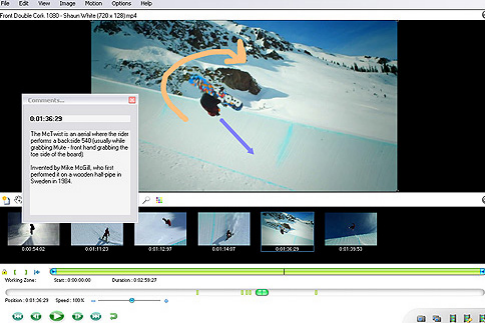Video analysis software has revolutionized various industries, enabling advanced video processing, object recognition, and behavior analysis. However, video analysis software has its own set of limitations, just like any other technology.
In this article, we’ll look at some common issues that arise when using video analysis software and offer solutions. Users can use video analysis software to its full potential and get accurate and meaningful results if they are aware of these limitations and use the right solutions.
Notable Limitations of Video Analysis Software and Ways to Overcoming Them
Accuracy and Precision
These are two of the most difficult issues with video analysis software. There are also ways to overcome these issues. The software’s ability to accurately identify and track objects can be affected by things like lighting conditions, camera angles, occlusions, and image noise. It is essential to use advanced algorithms that are capable of handling complex scenarios, optimize camera placement, and adjust lighting conditions to overcome this obstacle. Additionally, human verification and manual intervention can be crucial in enhancing the precision and accuracy of video analysis software results.
Real-Time Analysis
Real-time video analysis presents yet another significant obstacle. Real-time analysis of live video streams necessitates powerful computing power and optimized algorithms. This analysis is difficult due to the high frame rates, large data volumes, and need for immediate response. Utilizing optimized algorithms, parallel processing strategies, and efficient hardware resources are all necessary for overcoming this obstacle. Additionally, video analysis software’s real-time performance can be improved by prioritizing important events and reducing unnecessary computations.

Object Recognition and Tracking
Video analysis software relies heavily on accurate and dependable object recognition and tracking. However, dealing with objects with similar appearances or obstructions presents difficulties. Although object recognition capabilities of advanced algorithms based on machine learning and deep neural networks have improved, complex scenarios still present challenges. These limitations can be overcome by utilizing contextual information and techniques like feature-based tracking and multi-object tracking. In addition, the software’s ability to accurately identify and track objects can be improved through regular model training and updates.
Scalability and Computational Requirements
When it comes to dealing with large-scale video analysis, scalability and computational requirements can present difficulties. It takes a lot of computing power to process a lot of data and run complicated algorithms. Utilizing distributed computing architectures, optimizing software algorithms, and making use of high-performance hardware are all necessary for overcoming this obstacle. Scalability can be improved and computational bottlenecks can be reduced with the help of cloud-based solutions and parallel processing techniques. For effective video analysis across multiple cameras and streams, resource management techniques like load balancing and task distribution are essential.
Integration and Customization
It can be difficult to integrate software for forensic video analysis with existing workflows and systems. When integrating video analysis software into an existing infrastructure, compatibility issues, data formats, and interoperability constraints may arise. Open standards, APIs, and ensuring compatibility with industry-standard formats are all necessary for overcoming this obstacle. Customization options and flexibility in adapting the software to specific use cases are also essential. End-users and software developers can work together to ensure that the software meets specific requirements by facilitating seamless integration and customization.
In Conclusion
Video analysis software has tremendous application potential. However, for best results, it is essential to comprehend and address the limitations of this technology. Users can navigate the difficulties and overcome the limitations of video analysis software by concentrating on accuracy, real-time analysis, object recognition and tracking, scalability, integration, and customization. The potential for video analysis software to revolutionize industries and provide valuable insights will continue to expand with continuous advancements and proactive action.





